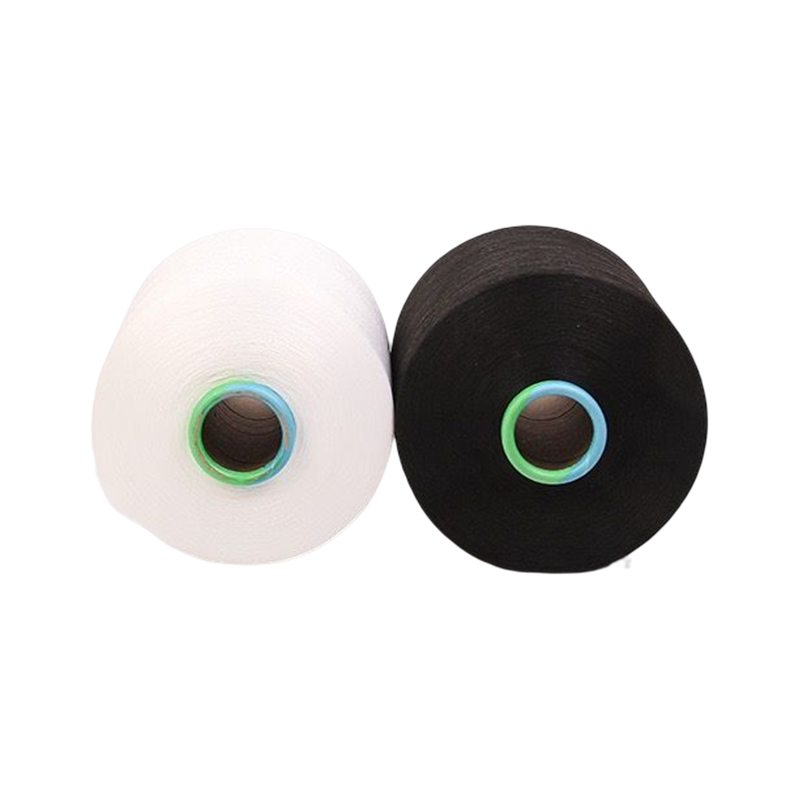- 1 Understanding DTY Polyester Yarn: A Versatile Synthetic Fiber
- 2 Advanced Applications of DTY Polyester Yarn Across Industries
- 3 Technical Considerations for dty polyester yarn count Selection
- 4 Sustainable Innovations in recycled dty polyester yarn
- 5 Future Frontiers for dty polyester yarn for technical textiles
Understanding DTY Polyester Yarn: A Versatile Synthetic Fiber
DTY (Draw Textured Yarn) polyester represents one of the most significant innovations in synthetic textiles. Unlike conventional polyester fibers, dty polyester yarn undergoes a specialized texturing process that imparts unique characteristics making it indispensable across multiple industries. The global market for DTY polyester is projected to grow at 6.8% CAGR through 2030, driven by its unparalleled combination of performance and cost-effectiveness.
High elastic environmentally friendly polyester DTY yarn Blue Series ZB0118 350
1.1 The Science Behind DTY Polyester Manufacturing
The production of dty polyester yarn involves a sophisticated four-stage process that differentiates it from other polyester variants:
1.1.1 Polymerization and Spinning
High-purity terephthalic acid (PTA) and monoethylene glycol (MEG) undergo polycondensation to create PET chips. These chips are then melted and extruded through spinnerets to form partially oriented yarn (POY). The POY exhibits about 60-70% crystallinity at this stage, requiring further processing to achieve optimal properties.
1.1.2 Drawing and Texturing Process
The transformative stage where POY becomes DTY involves:
- Simultaneous drawing (stretching) under controlled heat (180-220°C)
- False-twist texturing using friction discs or belt twisters
- Heat setting to stabilize the molecular structure
This process creates the characteristic crimps and loops that give DTY yarn its bulkiness and elasticity. Modern texturing machines can process yarns at speeds exceeding 1,200 m/min with precision tension control.
1.2 Technical Specifications and Performance Metrics
Premium-grade dty polyester yarn must meet stringent quality parameters:
| Parameter | Standard Range | Testing Method |
|---|---|---|
| Tenacity | 3.0-4.5 g/denier | ASTM D2256 |
| Elongation at Break | 20-40% | ISO 2062 |
| Boiling Water Shrinkage | 5-12% | AATCC 88B |
| Crimp Contraction | 15-25% | DIN 53840 |
Compared to FDY (Fully Drawn Yarn), DTY exhibits 30-50% higher bulk density and 2-3 times better elastic recovery. These properties make it particularly suitable for applications requiring dimensional stability under stress.
Advanced Applications of DTY Polyester Yarn Across Industries
2.1 Performance Apparel: Beyond Basic dty polyester yarn for clothing
The apparel industry consumes approximately 45% of global DTY production. Advanced applications include:
2.1.1 Moisture Management Systems
Micro-channel dty polyester yarn structures with capillary action properties enable superior moisture wicking. When compared to cotton in athletic wear:
| Property | DTY Polyester | Cotton |
|---|---|---|
| Drying Time (min) | 8-12 | 45-60 |
| Moisture Regain (%) | 0.4-0.6 | 8.5 |
| Wicking Height (cm/30min) | 12-15 | 3-5 |
2.1.2 Thermal Regulation Fabrics
Phase-change materials (PCMs) can be incorporated into dty polyester yarn during texturing to create fabrics with adaptive insulation properties. These advanced textiles maintain comfort within ±2°C of setpoint temperature across environmental variations.
2.2 Industrial Solutions with high tenacity dty polyester yarn
Industrial applications demand yarns with tenacity exceeding 6.0 g/denier. Key developments include:
2.2.1 Composite Reinforcement
When combined with epoxy resins, high tenacity dty polyester yarn creates composites with:
- Specific strength comparable to aluminum alloys
- 40% weight reduction versus steel components
- Excellent fatigue resistance (>10^6 cycles at 70% load)
2.2.2 Smart Safety Systems
Conductive DTY variants with carbon nanotube coatings enable:
- Real-time strain monitoring in safety harnesses
- Embedded pressure sensing in automotive airbags
- Temperature-responsive tension control in lifting slings
Technical Considerations for dty polyester yarn count Selection
3.1 Denier Systems and Fabric Engineering
The relationship between dty polyester yarn count and fabric properties follows non-linear dynamics:
3.1.1 Fine Count Applications (20D-75D)
Ultra-fine microfilament DTY enables:
- Fabric weights below 40 g/m² for high-performance lingerie
- Sub-micron fiber structures mimicking silk handfeel
- Medical textiles with pore sizes <5μm for bacterial filtration
3.1.2 Heavy Denier Solutions (300D-1000D)
Industrial-grade dty polyester yarn 150D and above provides:
- Abrasion resistance >50,000 cycles (Martindale test)
- UV stability retaining 90% strength after 2000 hrs exposure
- Chemical resistance to pH 2-12 environments
3.2 Yarn Structure Optimization
Advanced texturing techniques create specialized DTY configurations:
| Structure Type | Crimp Frequency (crimps/inch) | Applications |
|---|---|---|
| Standard | 12-18 | General apparel |
| High-elastic | 22-28 | Activewear |
| Low-shrink | 8-12 | Technical textiles |
Sustainable Innovations in recycled dty polyester yarn
4.1 Closed-Loop Recycling Technologies
Modern mechanical recycling systems for recycled dty polyester yarn achieve:
4.1.1 Fiber-to-Fiber Recycling
Advanced separation techniques now recover 95%+ of textile waste:
- Near-infrared (NIR) sorting purity >98%
- Supercritical fluid depolymerization with 99% monomer recovery
- Energy consumption reduced by 40% versus virgin production
4.1.2 Ocean Plastic Upcycling
Marine-grade recycled dty polyester yarn from ocean waste demonstrates:
- Salt resistance exceeding virgin polyester
- Enhanced UV stabilization from marine polymer degradation
- 30% lower carbon footprint than land-sourced recycled PET
4.2 Biodegradable DTY Developments
Next-generation bio-based DTY variants include:
| Material | Degradation Time | Strength Retention |
|---|---|---|
| PLA-blended DTY | 12-24 months | 85% of standard DTY |
| PHA-modified DTY | 6-18 months | 75% of standard DTY |
Future Frontiers for dty polyester yarn for technical textiles
5.1 Smart Textile Integration
Third-generation dty polyester yarn for technical textiles incorporates:
5.1.1 Conductive Hybrid Yarns
Coaxial DTY structures with:
- Silver nanowire coatings achieving 10^-3 Ω·cm resistivity
- Piezoelectric cores generating 5V/cm under strain
- Electroluminescent variants with 100 cd/m² brightness
5.1.2 Phase-Change Smart Yarns
Microencapsulated PCMs in DTY provide:
- Thermal storage capacity of 120-150 J/g
- >10,000 phase cycles without performance degradation
- Activation temperatures adjustable between 18-40°C
5.2 Nanotechnology Enhancements
Nano-engineered DTY achieves unprecedented functionality:
| Nanocoating | Functionality | Durability |
|---|---|---|
| TiO₂ | Self-cleaning | 50+ washes |
| Graphene | Antimicrobial | Permanent |
| MXene | EMI shielding | 30+ washes |

 English
English
 Español
Español


-1.png)

-2.png)
-2.png)
-3.png)
